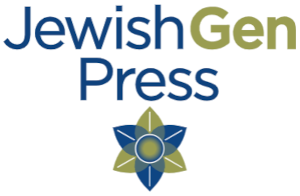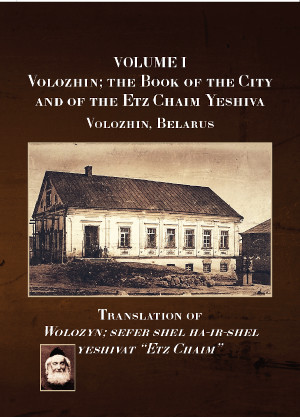

Translation of
Published by the JewishGen Press
Editor of Original Yizkor Book: E. Leoni
Volume I is available from for $42.00
Project Coordinator: Anita Frishman-Gabbay
Emeritus Coordinator: Moshe Porat (Perlman) z”l
Cover Design: Rachel Kolokoff Hopper
Translator: Jerrold Landau
Layout and Formatting: Jonathan Wind
Name Indexing: Stefanie Holzman
Book Summary: Bruce Drake
Volume I: 8.5”x11”, 590 pages, hardcover with original photos
Volume II: 8.5”x11”, 350 pages, hardcover with original photos
Volume II is available from for $35.00
If purchased together, both volumes are available from for $69.00

|
Details:
Valozhyn was a small town in Belarus about 47 miles northwest of the capital Minsk situated along the Minsk-to-Vilnius highway. It was renowned for the Yeshivah established there in the early 1800s that became a beacon for Torah study for Jews in eastern Europe and served as a model for other institutions of religious study.
Much of the book is a testament to the history, traditions and culture of the Yeshivah – known as Etz Chaim – and to the scholars whose work shone there over the course of generations. But the editors considered the volume to be an amalgam of two books: one focused on the Yeshivah; the other telling the story of the Valozhyn community and the lives, sufferings and struggles for existence of the Jews who were part of it.
The first section gives an account of the notable figures who were either born in the city, connected with the “Valozhyn dynasty,” or the select few who helped to maintain the Valozhyn tradition. It traces how the Valozhyn sages and their disciples shaped not only the Valozhyn community but also religious thought elsewhere in the Torah world.
The second covers a period of 42 years, from the beginning of the twentieth century until the destruction of the Jewish community in 1942. Valozhyn was not a prosperous town with established industries. Life was not easy. Most of the Jews earned their livings as peddlers, store owners and “go-betweens” who bought and sold their wares from and to the peasants and others. A major segment of the economy was providing room and board for students who came to study in the Yeshivah.
Jews settled in the town during the second half of the 16th century. In the 19th century, the population grew from 590 in 1847 to 2,452 Jews in the 1897 census. On the eve of the Holocaust, there were about 3,000 Jews living there.
The Germans captured Valozhyn in 1941 and soon established a ghetto. In May of 1942, the ghetto was cordoned off and the town's Jews were marched off to be executed, passing through the streets of the Christians who jeered and mocked them. Following its liberation, several Jews who returned openly to Valozhyn were murdered by local townspeople.
“The Volozhin Yizkor Book is not a graveyard or the mark of the last kindness,” one of its editors writes. “It sets out to record life, it sets out to be a source of pleasure, of inspiration and of physical exaltation. The words and thoughts of the Volozhin sages deserve to be drunk with thirst all the year around.”
Alternate names for the town are: Valozhyn [Bel], Volozhin [Rus, Yid], Wołożyn [Pol], Volozhyn, Vałožyn, Volozin
|
 JewishGen Press
JewishGen Press
 JewishGen Home Page
JewishGen Home Page
Copyright © 1999-2025 by JewishGen, Inc.
Updated 3 Dec 2024 by LA